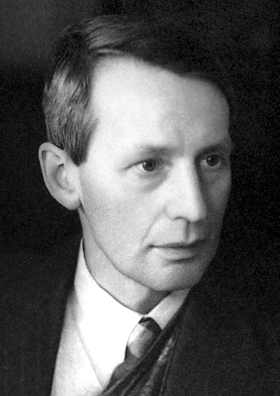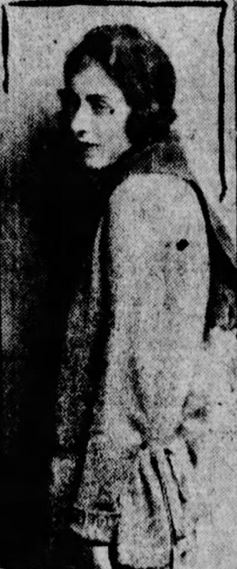1. Overview

Sir George Paget Thomson (3 May 1892 - 10 September 1975) was an English physicist who was awarded the 1937 Nobel Prize in Physics alongside Clinton Davisson. The prize recognized Thomson's experimental discovery of the wave properties of the electron through electron diffraction, a finding that provided crucial evidence for de Broglie's hypothesis of matter waves. He was the son of J. J. Thomson, also a Nobel laureate in physics, creating a unique father-son duo who both received the Nobel Prize for their work on the electron, albeit from different perspectives-his father for discovering the electron as a particle, and the son for demonstrating its wave-like nature. Beyond his groundbreaking work in quantum physics, Thomson also specialized in nuclear physics during the late 1930s and World War II, notably serving as chairman of the MAUD Committee, which concluded the feasibility of developing an atomic bomb, highlighting the profound social and military implications of scientific research.
2. Early Life and Education
George Paget Thomson was born on 3 May 1892, in Cambridge, England. He was the son of the distinguished physicist and Nobel laureate J. J. Thomson and Rose Elisabeth Paget, who was the daughter of George Edward Paget. Thomson received his early education at The Perse School in Cambridge. Following his schooling, he enrolled at Trinity College, Cambridge, where he pursued studies in both mathematics and physics. His academic pursuits at Cambridge continued until the outbreak of World War I in 1914.
3. World War I and Military Service
With the commencement of World War I in 1914, George Paget Thomson's academic career was temporarily interrupted as he was commissioned into the Queen's Royal West Surrey Regiment. After a brief period of service in France, he transferred to the Royal Flying Corps in 1915. In this new role, he dedicated his efforts to research in aerodynamics, conducting his work at the Royal Aircraft Establishment in Farnborough and other related facilities. He continued his military service and research until 1920, when he resigned his commission as a Captain.
4. Academic Career
Following his military service in World War I, George Paget Thomson returned to academia, becoming a Fellow at Trinity College, Cambridge. He later moved to the University of Aberdeen, where he conducted the research that would earn him the Nobel Prize. In 1930, he was appointed Professor of Physics at Imperial College London, taking over the chair previously held by the late Hugh Longbourne Callendar. He remained at Imperial College until 1952. In 1952, Thomson was appointed Master of Corpus Christi College, Cambridge, a position he held until 1962. In recognition of his contributions and tenure, Corpus Christi College honored him in 1964 by naming the George Thomson Building, a work of modernist architecture, on the college's Leckhampton campus.
5. Discovery of Electron Diffraction
George Paget Thomson's most significant scientific achievement was his experimental discovery of the wave properties of the electron through electron diffraction. This groundbreaking work was conducted during his tenure at the University of Aberdeen. In 1937, he was jointly awarded the Nobel Prize in Physics with the American physicist Clinton Davisson, who had independently made the same discovery.
Thomson's discovery provided crucial experimental confirmation for de Broglie's hypothesis, first posited in the 1920s, which proposed that particles like electrons could also exhibit wave-like behavior. This finding was particularly notable because Thomson's father, J. J. Thomson, had won the Nobel Prize in 1906 for his work establishing the electron as a particle. The son's work demonstrated that the electron could be diffracted like a wave, thus illustrating the principle of wave-particle duality.
In his experiments, Thomson scattered electrons through extremely thin metallic films, approximately 1.2 in (3 cm) thick, which had known crystal structures. He used materials such as aluminium, gold, and platinum. By observing the resulting diffraction patterns, Thomson was able to determine their dimensions. In every instance, his observed diffraction patterns were within 5 percent of the values predicted by de Broglie's wave theory, providing compelling evidence for the wave nature of electrons.
6. Nuclear Physics and the MAUD Committee
In the late 1930s and throughout World War II, George Paget Thomson shifted his focus to the field of nuclear physics. His research during this period concentrated on the practical military applications of nuclear science. A particularly significant role he undertook was serving as the chairman of the crucial MAUD Committee between 1940 and 1941.
The MAUD Committee, an acronym that originally stood for "Military Application of Uranium Detonation" (though later reinterpreted), was an influential British scientific committee tasked with investigating the feasibility of developing an atomic bomb. Under Thomson's leadership, the committee concluded that the construction of an atomic bomb was indeed feasible, a finding that had profound implications for the course of the war and the future of global power dynamics. This work underscored the significant social and military ramifications that scientific research could have, directly influencing the decision-making process regarding the development of nuclear weapons. After the war, Thomson continued his work on nuclear energy, contributing to its ongoing development.
7. Scientific Writings and Interests
Beyond his experimental work in physics, George Paget Thomson also engaged in broader scientific discourse through his writings and lectures. He authored several works on aerodynamics, a field he had first explored during his military service in World War I. Additionally, Thomson wrote extensively on the value and role of science in society, reflecting his deep engagement with the societal impact of scientific advancements. In 1959-1960, he served as the president of the British Science Association, and during his tenure, he delivered a notable address titled "Two aspects of science." Earlier in his career, between 1929 and 1930, Thomson also served as a Non-Resident Lecturer at Cornell University in Ithaca, New York.
8. Awards and Honors
Sir George Paget Thomson received numerous accolades and honors throughout his distinguished career, recognizing his significant contributions to physics and science.
- Nobel Prize in Physics (1937): Shared with Clinton Davisson for his discovery of the wave properties of the electron by electron diffraction.
- Knight Bachelor (1943): He was knighted, allowing him to be addressed as "Sir."
- Howard N. Potts Medal (1926 or 1932): Awarded for his scientific achievements.
- Hughes Medal (1939): Presented by the Royal Society of London.
- Bakerian Medal (1948): A prestigious award from the Royal Society.
- Royal Medal (1949): Another esteemed award from the Royal Society.
- Faraday Medal (1960): Awarded by the Institution of Electrical Engineers (now the Institution of Engineering and Technology).
- Fellow of the Royal Society (1930): Elected as a Fellow, recognizing his scientific excellence.
9. Personal Life and Death
In 1924, George Paget Thomson married Kathleen Buchanan Smith. Kathleen was the daughter of the Very Rev. Sir George Adam Smith, who served as the Principal of the University of Aberdeen. George and Kathleen had four children together: two sons and two daughters. Sadly, Kathleen passed away in 1941. Sir George Paget Thomson died on 10 September 1975, in Cambridge, at the age of 83. He is buried alongside his wife in the parish churchyard in Grantchester, a village located south of Cambridge.

10. Legacy and Impact
Sir George Paget Thomson's discovery of electron diffraction fundamentally altered the understanding of matter, providing crucial experimental evidence for the wave-particle duality of electrons. This work solidified the foundations of quantum mechanics and had a lasting impact on the field of physics, demonstrating that particles previously thought to be purely discrete entities also possess wave-like characteristics. His contributions continue to be a cornerstone of modern physics education and research.
Beyond his direct scientific legacy, Thomson's family also made significant contributions in other fields, reflecting an intergenerational influence. One of his sons, Sir John Thomson (1927-2018), pursued a distinguished career in diplomacy, serving as the High Commissioner to India from 1977 to 1982 and as the Permanent Representative to the United Nations from 1982 to 1987. His grandson, Sir Adam Thomson (born 1955), followed in his father's footsteps, also becoming a senior diplomat. He served as the High Commissioner to Pakistan from 2010 to 2013 and as the Permanent Representative to NATO from 2014 to 2016. Furthermore, one of Thomson's daughters, Lillian Clare Thomson, married Johannes de Villiers Graaff, a notable South African economist and mountaineer. This demonstrates the varied and impactful careers pursued by members of his family, extending the legacy of the Thomson name beyond the realm of physics.